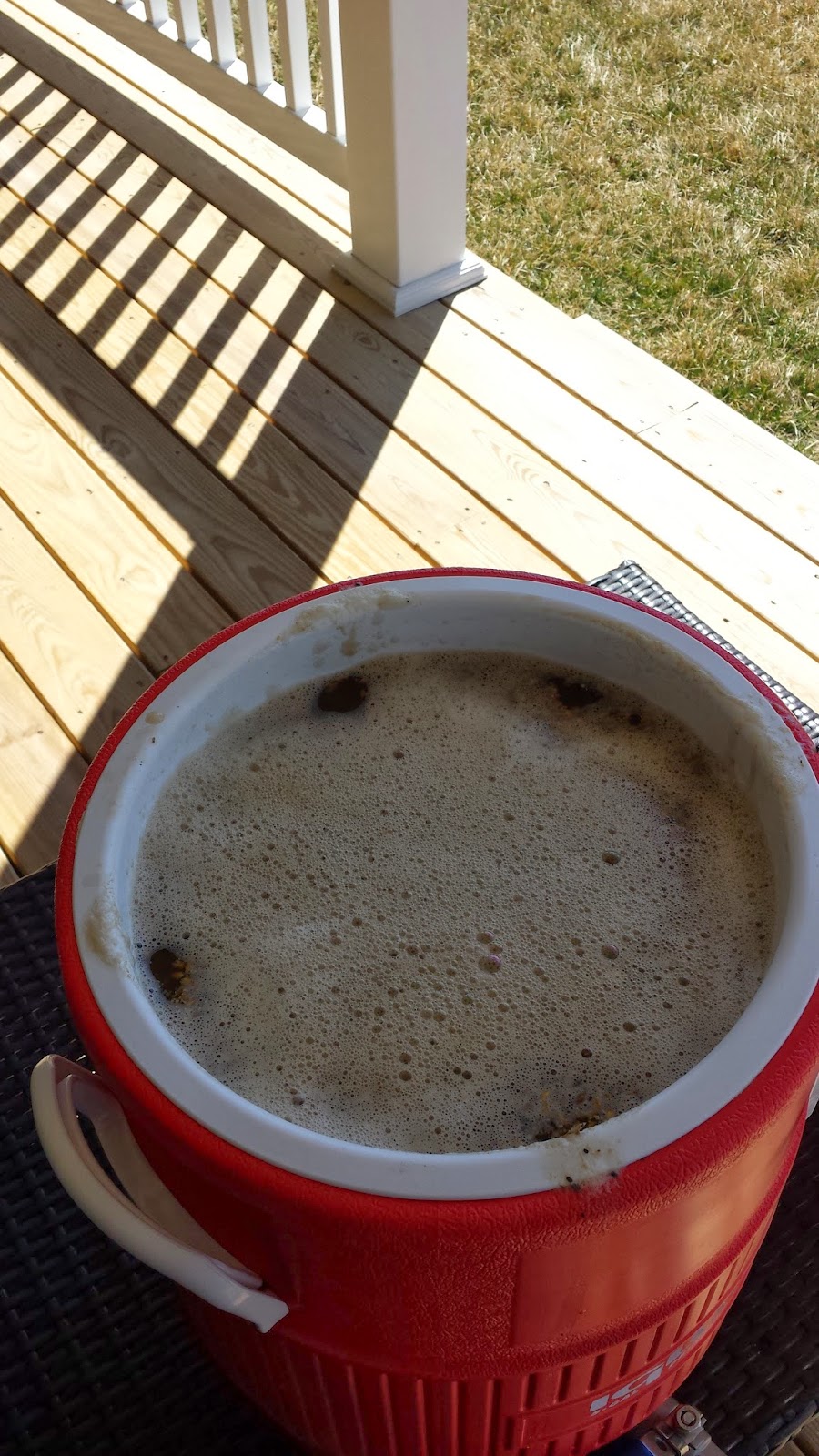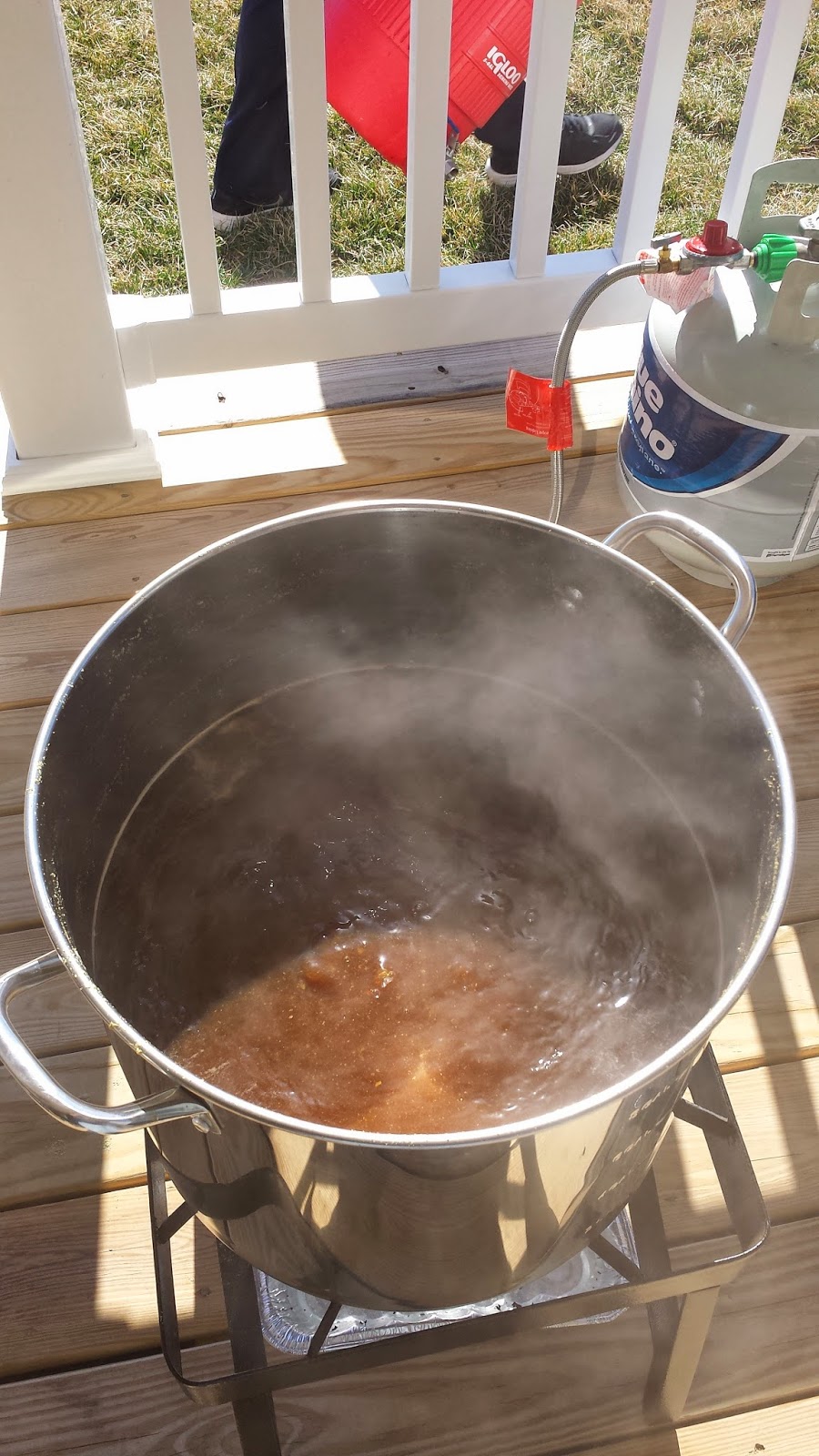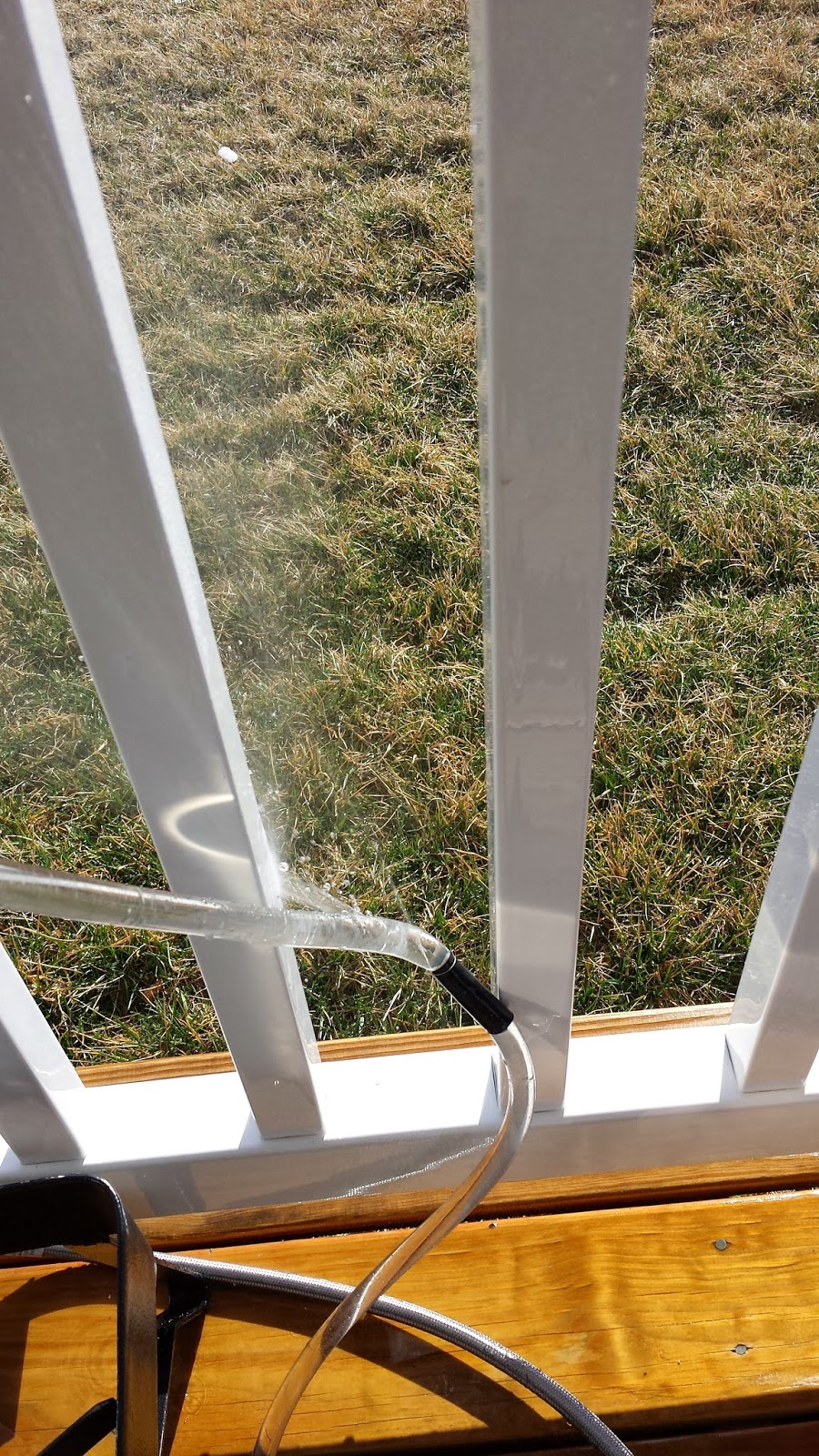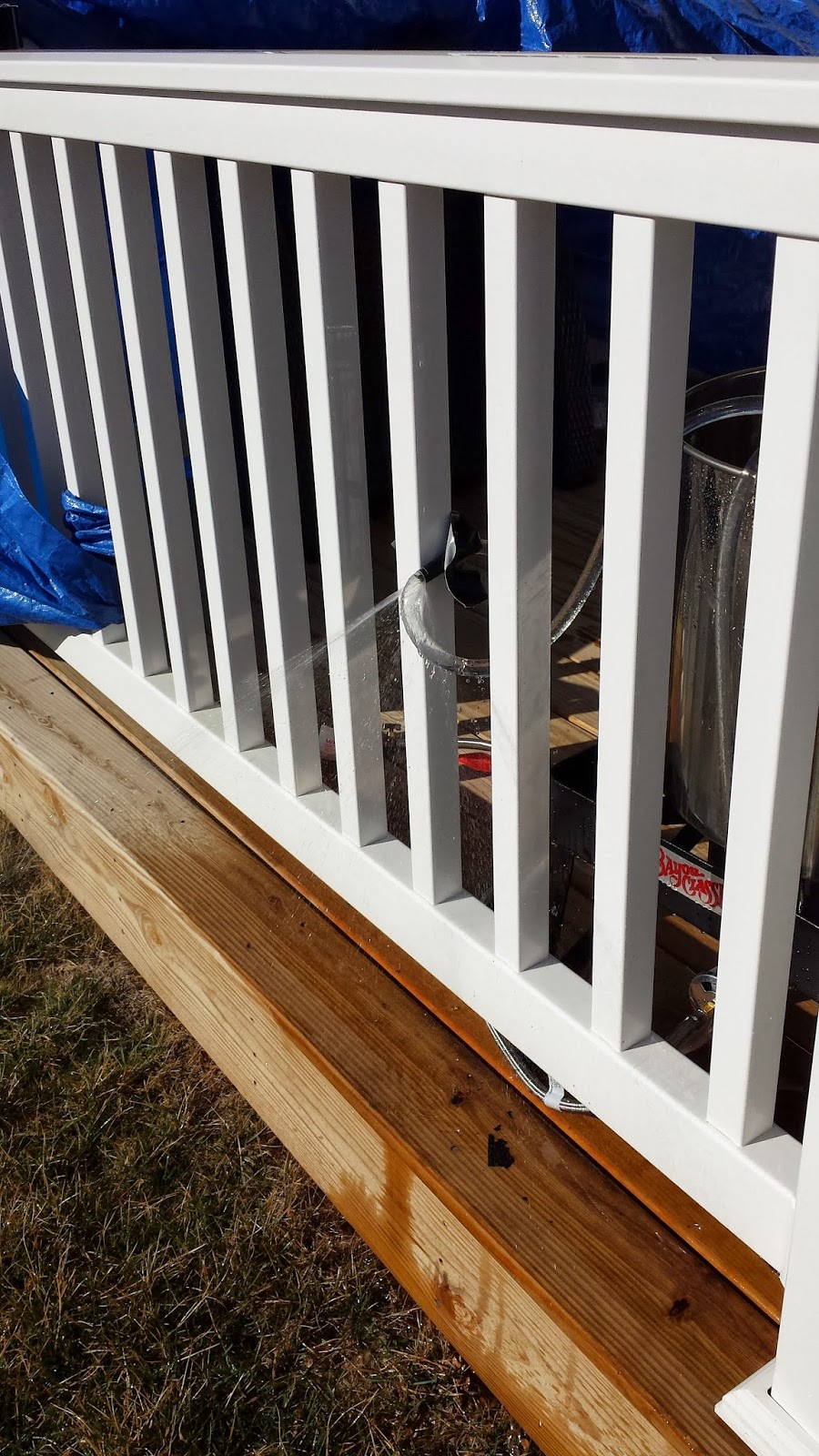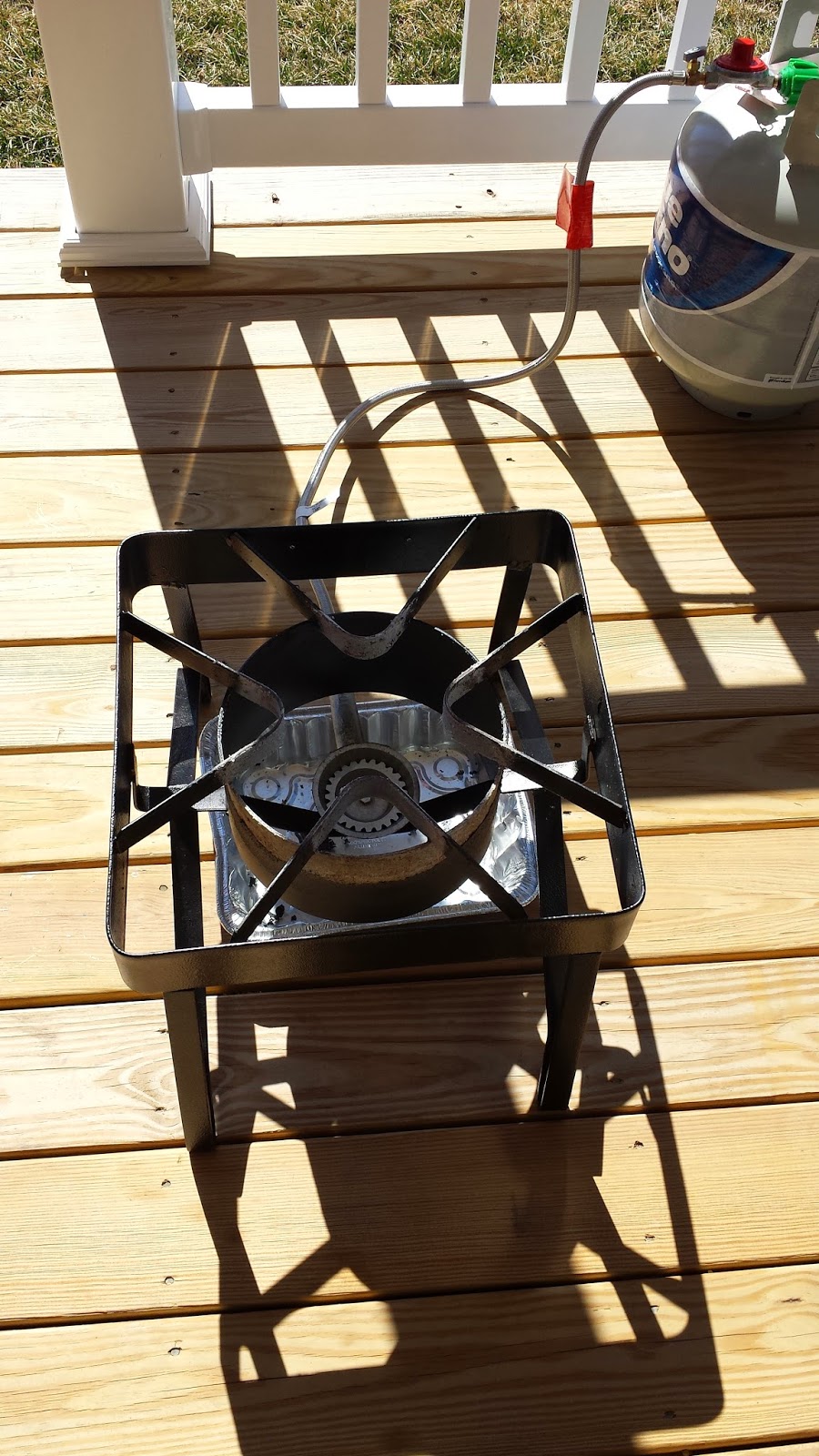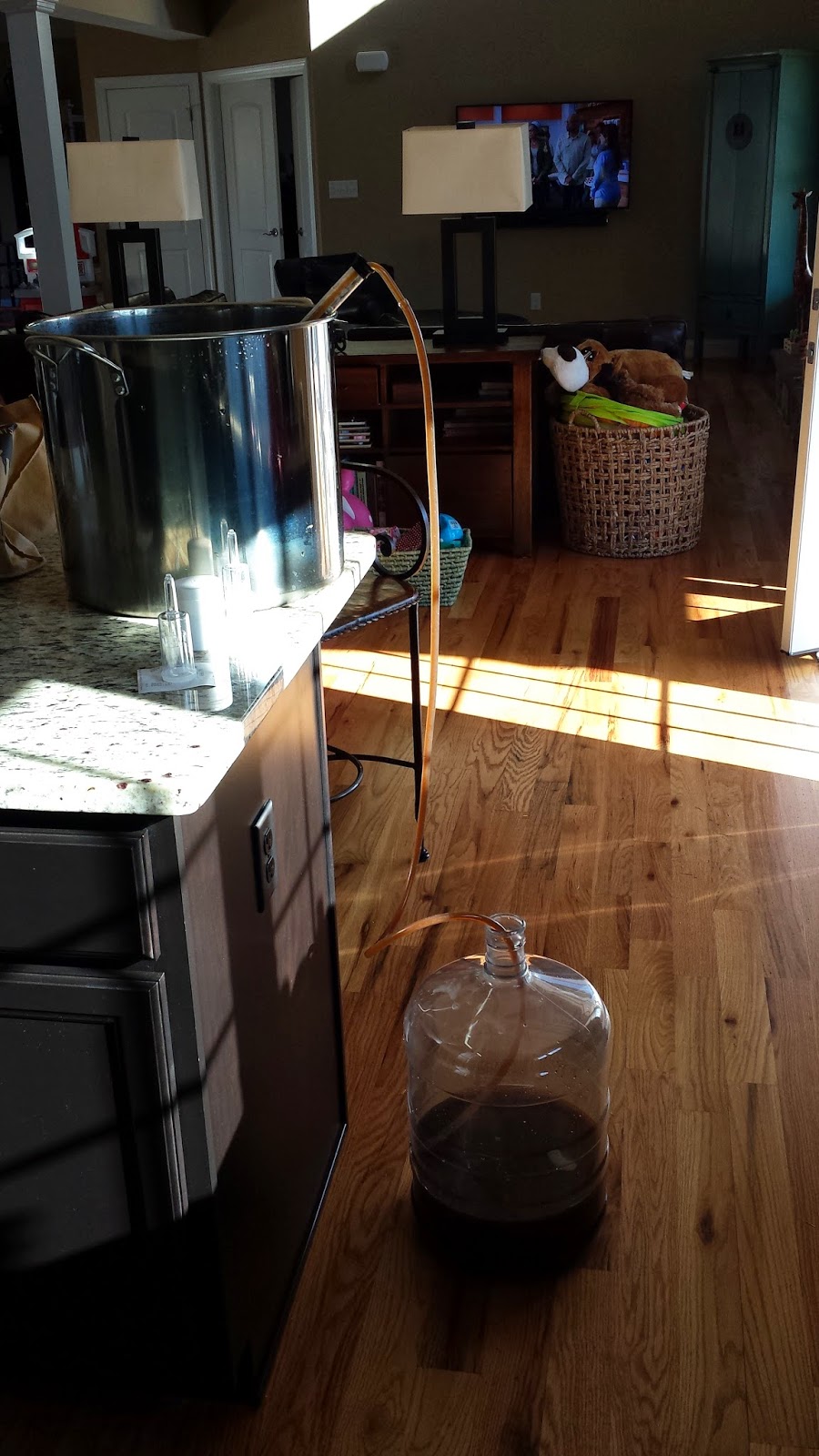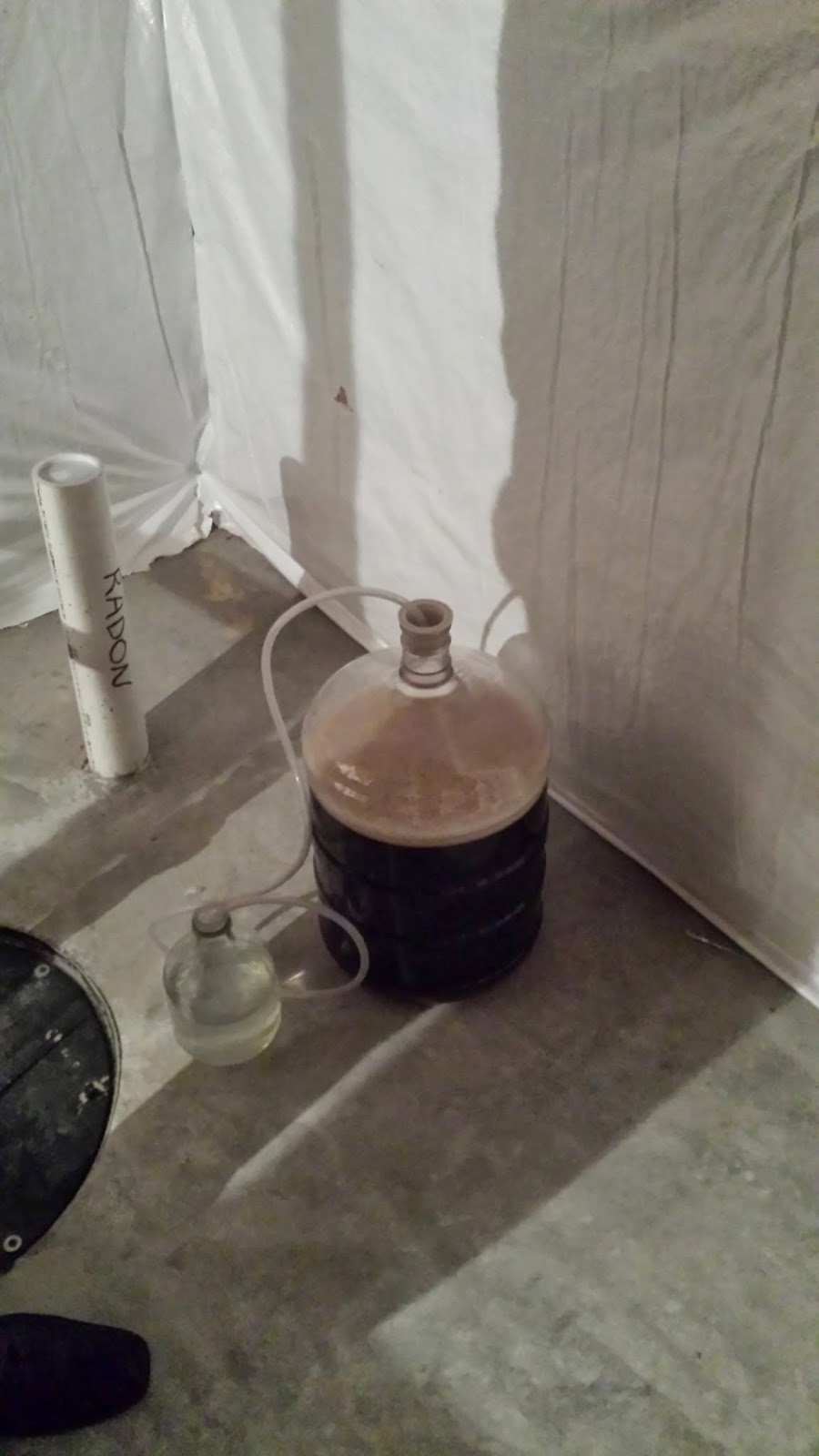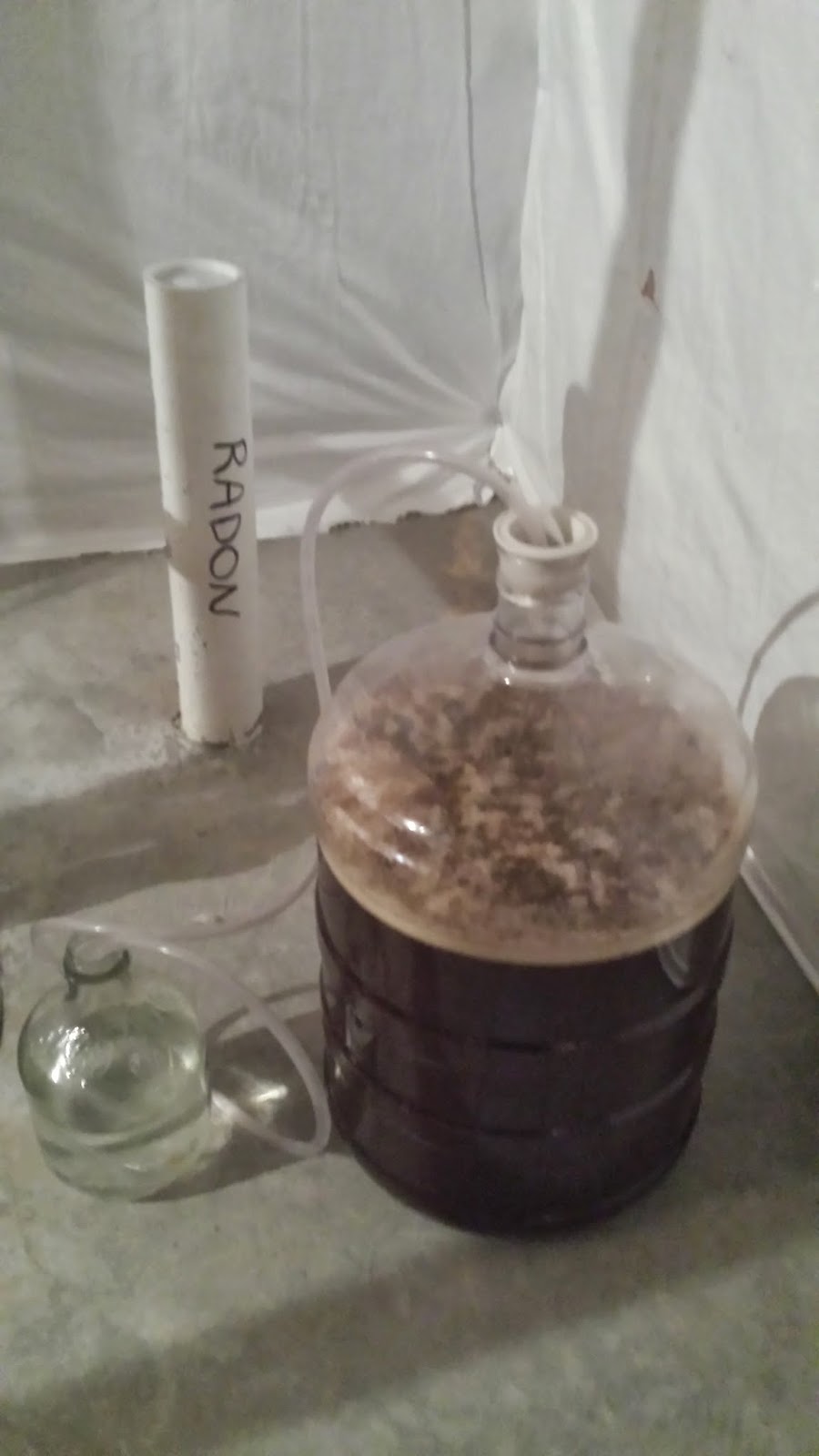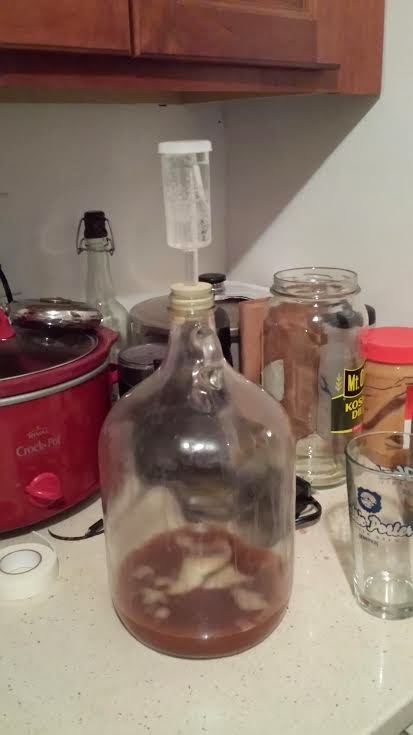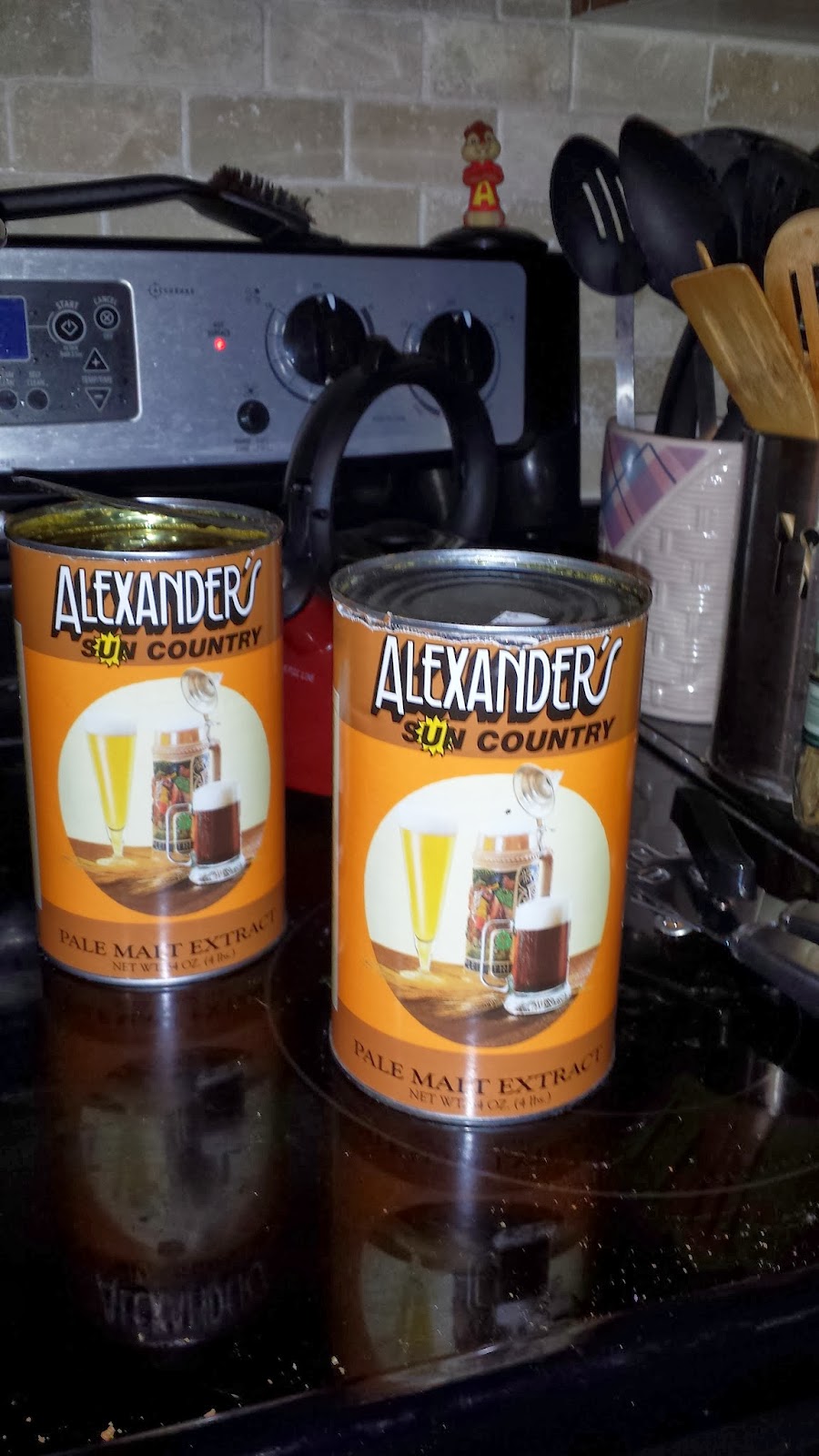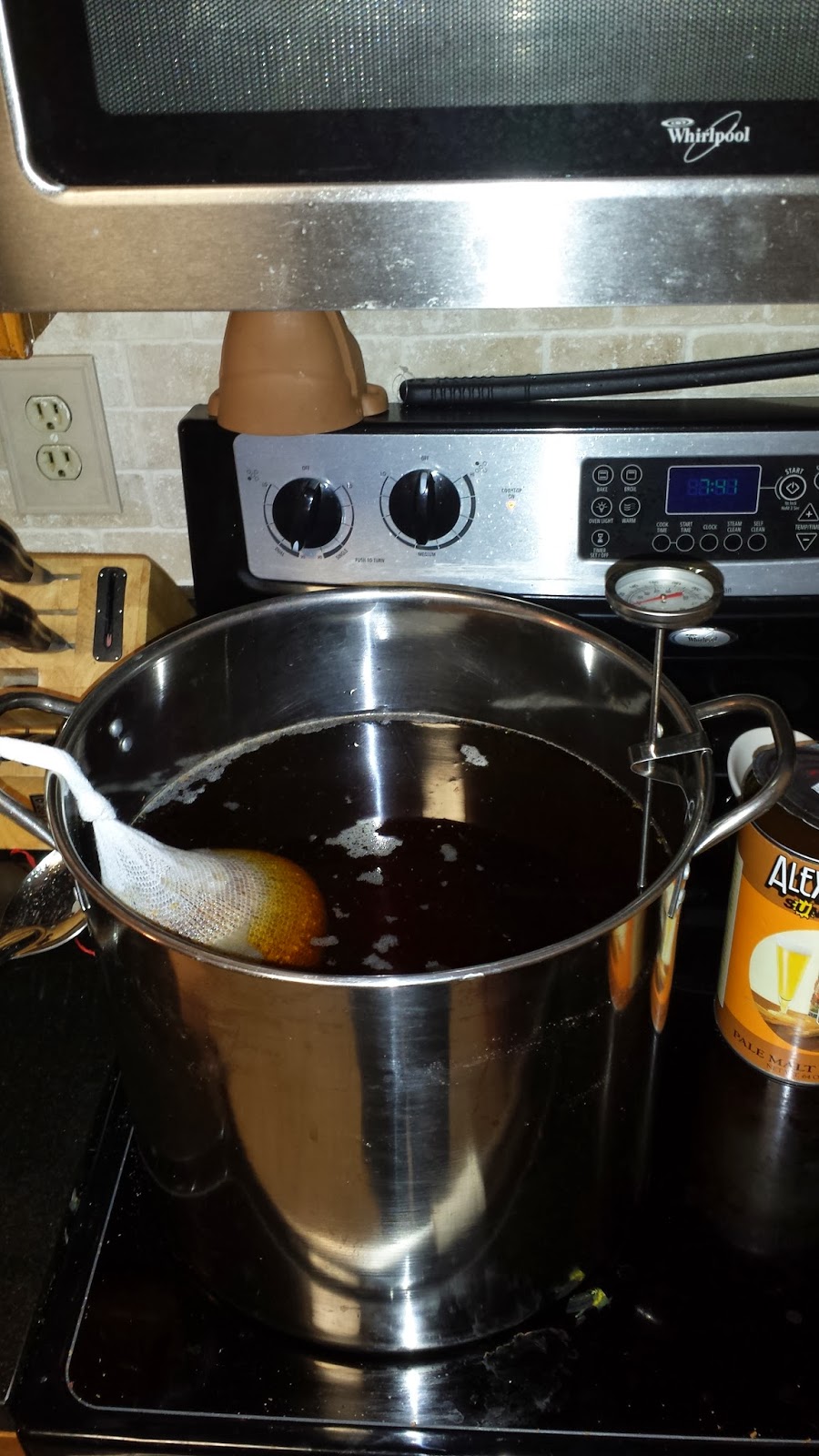Snow and ice in the area has closed my work for the day, so I decided to take this opportunity to write about my second week of BJCP, plus, I bottled my second cider.
Each week at class we have one technical topic, and one beer style topic. The technical topic yesterday was Malt. Malt is one of the four critical ingredients in beer along with Hops, Water, and Yeast. Malt really is what makes beer, beer. You can ferment other sugars, or even balance the sweetness of those sugars with hops, but you wouldn't get beer. I don't feel the need to go over the whole presentation, but I thought I'd give an overview of the malting process.
What brewers call malt is malted barley. To make malted barley you steep the seeds of the barley plant, allow them to germinate just a bit, then dry or "kiln" them.
First the barley kernels are steeped in water. During steeping, the water is changed multiple times, and the grains are aerated to release the CO2 the wet grains produce, provide oxygen, and keep the temperature even. Once the root sheath (called a "chit") penetrates the husk of the kernel, the grains are transferred for germination.
During germination, the seeds are allowed to begin growing. Again they are aerated, to provide O2 and release CO2. This is also called "modification". The length to which the barley is allowed to grow is determined by the type of malt the maltster wishes to make with the particular batch. The more it is allowed to germinate the more it is said to be "modified". This modification can change the characteristics of the malt, but also means more starches are consumed by the germinating seed which means there are fewer starches to be made into fermentable sugars. Once the appropriate level of "modification" is reached, the barley is dried and prepared for kilning.
Kilning is the drying or roasting of the malt. The longer a malt is kilned, the darker it becomes and on the darkest end of things, you get the robust coffee and chocolate flavors for stouts and porters.
Unfortunately, we didn't go as much as I would like into the specific types of malts and what characteristics these malt impart to the beer. Maybe we'll get into it more later in the class.
The beer topic this week was Amber and Dark Lagers. These are lagers (meaning they were fermented with "bottom fermenting" yeasts at lower temperatures) with a malt-forward presence and very little hop flavors or aromas. We sampled a commercial version of each of the sub-styles. After the class I kicked myself because I really should have taken tasting notes for the blog as well as to practice my writing skills in relation to judging. I was focused too much on the tasting itself and seeing what characteristics I could identify. I'll make sure to take good notes from now on. For today, though, I'll give my impressions from memory.
European Amber Lager
Vienna Lager -
Cutlass from Heavy Seas: My third favorite from the flight. Clean and refreshing with toasty notes and good balancing sweetness. I also got a good whiff of honey on the nose. I remember having this when I first got into craft beer, but then they were advertising it as a Maerzen. Someone in the class told us that when Heavy Seas was entering it into competitions it was only getting mediocre marks. But, when they entered it as a Vienna Lager it started winning all sorts of awards, so they rebranded it.
Oktoberfest/ Maerzen -
Fall Fest from Abita: I think this would have been a lot better if it had been a fresher bottle. It was quite similar to the Cutlass, but it lacked that clean taste and mouthfeel. I hesitate to say it tasted a bit of cardboard on the finish, but there was definitely something "off" right at the end.
Dark Lager
American Dark Lager -
Beck's Dark: I tried to keep an open mind about this one, but I've never been a fan of Beck's in general, and it always tastes a bit skunky to me, most likely due to the green bottle. This was no exception. Strangely, though, the malt sweetness balanced this flaw out pretty well, and mixed with everything else, it kind of added character, in a good way.
Munich Dunkel -
Kloster Dunkel from Ettaler: This was was similar to the Cutlass, but a little more complex. Rather than simply malt sweetness, there was breadiness and maybe a hint of hop bitterness.
Schwarzbier -
Koestritzer Schwarzbeir: I think this was my second favorite of the flight. Where the previous ones in the flight had toasty malt flavor, this one was more "roasty" meaning, for lack of a better term more "burnt" but not unpleasantly so.
Bock
Maibock/ Helles Bock -
Mai-Ur-Bock from Einbecker: Because all of these beers are "malt-forward" I feel like I'm just going to repeat a lot of the same words over and over. This one and the next both had a little more hop bitterness to balance out the sweetness.
Traditional Bock -
Ur-Bock Dunkel from Einbecker: This one was darker than the Maibock, and even though the BJCP style guidelines would have it reversed, I thought this one was a bit less sweet than the previous.
Doppelbock -
Celebrator from Ayinger: I've had this one a few times. It and the Cutlass were the only ones I'd had previously. This one was the darkest, sweetest, and most complex. It even has a slight red tint to the dark brown.
Eisbock -
Kulmbacher Eisbock: My favorite one of the flight, and the most complex. It had many flavors I couldn't pin down. One in particular I recognized but couldn't place. It wasn't until I talked with some of my classmates that I figured out it was akin to a sweet almost coconutty rum. I need to find this again.
All in all, a good class. I was unaware of a couple of these sub-styles and got to try a bunch of beers I'd never had before. The malt presentation was very informative and I intend to look deeper into some of the specifics of the subject.
When I woke up today, I decided I would bottle my second cider. I'm having some pulled straight from the bottling bucket as I type this. Luckily I had just enough bottle caps on hand to get the job done. I think I only have like 12 or 15 left now.
There was a little issue, though. As I was bottling I noticed that even though I had run the bottles through the dishwasher and the heated dry, some of the bottles had a powdery white gunk on the inside. I think it's from forgetting to rinse and properly dry them after I drank from them. Most of these bottle had held the first cider. I put each offending bottle aside, and when I was done I had only bottled a case's worth. I covered the bottling bucket with some paper towels, then scrubbed the bottles with my bottle brush and rinsed them out with sanitizing solution (using up the last of my powder) and ran them through the dishwasher again before finishing bottling. I got just three bottles shy of two cases. The initial brewing notes and tasting notes at racking can be found
here.
Now for tasting notes:
It is a pale gold color, and is very clear. I placed a typewritten page on the other side of the glass and could read through it. I tried to take a picture, but the camera made the text blurry. Here's a picture I can use:
It smells of tart and slightly sour apple with a hint of nuttiness, and unfortunately the faintest smell of rubbing alcohol. Fortunately, the alcohol smell doesn't transfer to the taste. Definite tart apple, and the nuttiness comes out much more in the flavor. I think this is because of the prolonged time I kept it on the lees. The mouthfeel is light but not thin.
This certainly has more flaws than the last one, but it is also the most complex. All in all, good. I think that's because I used farm fresh cider rather than store bought. I'd love to use it again. I like the nuttiness, but it seems a bit out of place. I'd like to experiment and see if I can't get it into a beverage that can compliment that flavor better.
I'll probably leave this in the bottle for a few weeks before drinking. I'm a little worried about the possibility of tainted bottles, so I need to give any problems that might arise enough time to show themselves. Lesson definitely learned. I need to inspect bottles better before and after washing and sanitizing. If I had caught the gunk before putting the bottles through the washer, I could have scrubbed them out and avoided the little bottling "half-time".
I think that's enough for the day... I really need to come up with a good way to end these posts... Cheers is too obvious...




